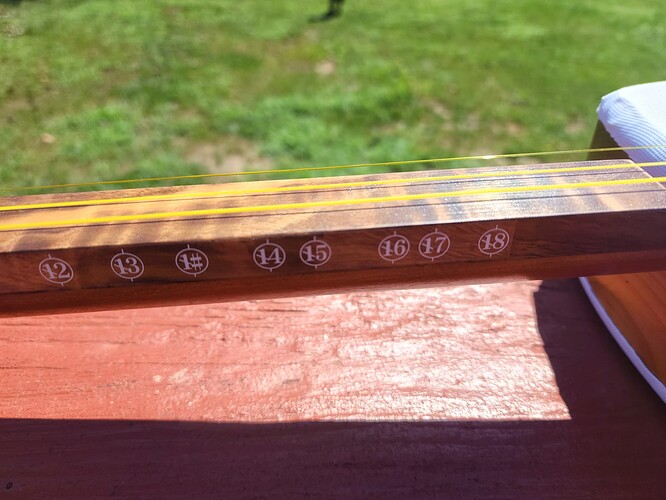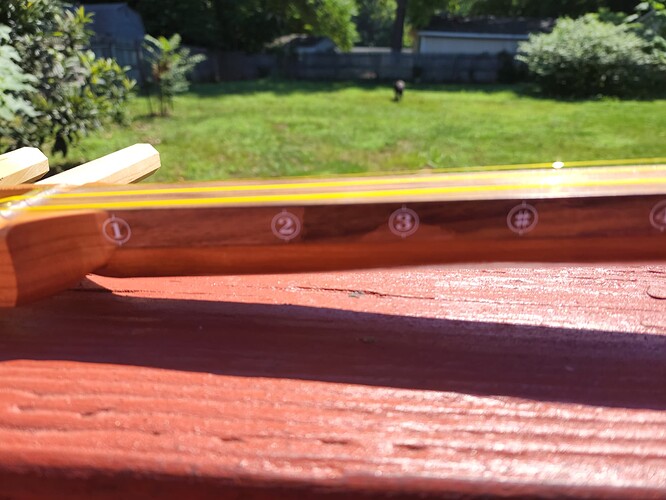Hi Paul,
Looking carefully at the photos you provided, it seems like this is Shamibuddy. Is that right?
If so, this is 100% a learning instrument, to which I would not have any issues with modifications. Metal frets seem to be a nice touch, if you intend your Shamibuddy to always be used for learning, with the person then transitioning to a regular Shamisen.
You can also build a small invisible bump with superglue. Just apply a very narrow line of non-viscous superglue, spray some accelerator (from far away, otherwise the air jet will flatten the glue line), and repeat until you get to the bump thickness you need. Removing it should not leave any marks, if you file it down to nearly wood height then polish until it’s invisible.
But I agree with Shamanth in that the learner should not depend on the frets after a short while. For that, you would need removable bumps, that you can achieve with any kind of narrow adhesive strip (like this: https://www.amazon.com/JIAHAO-Silver-Striping-Decoration-Sticker/dp/B08DQXM5YH), or if you have, some embossed copper shielding foil tape.
As for shortening the Sao for smaller hands, it’s important to notice that the Sao has a certain geometry to prevent warping. However, I remember something about Kyle using a metal rod inside the Sao (but I’m not sure if that’s also on the Shamibuddy). Maybe ask Kyle about the potential warping because of a reduction in Sao thickness, since the wood used on the Shamibuddy, even though it appears to be laminated, doesn’t seem to be hard (except the Sao fingerboard). If it has the metal rod core, you would be fine with the reduction, but make sure to ask how many millimeters of wood you have after the rod.
Cheers.
(Note: edited for bad spelling)


